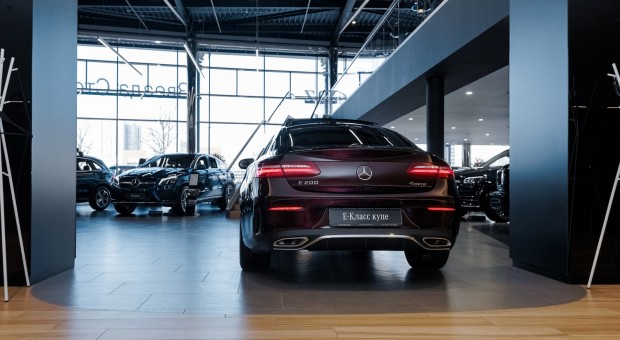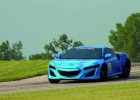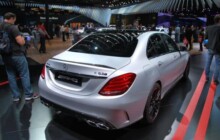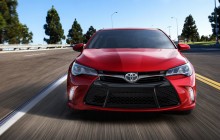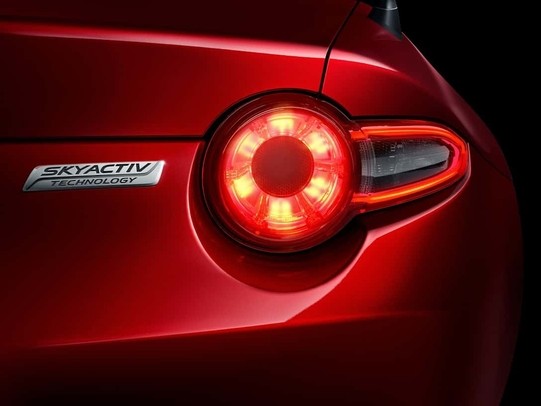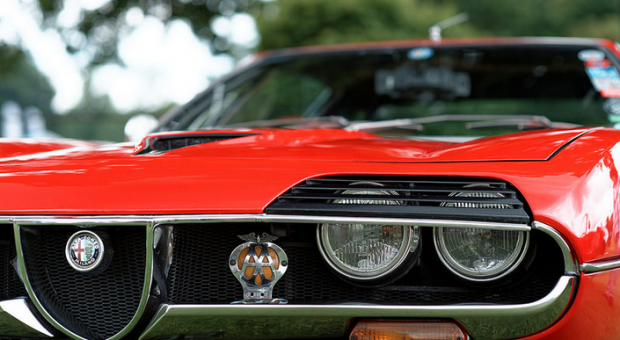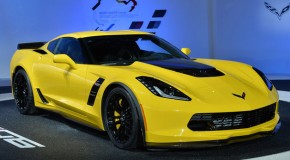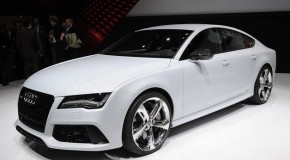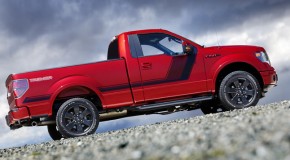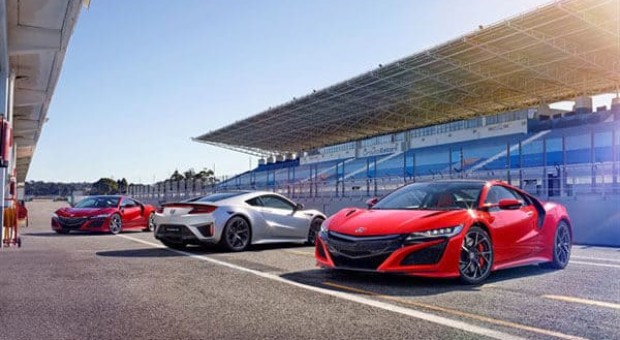
New Honda NSX – Bringing a ‘New Sports eXperience’ to the supercar segment
When the original Honda NSX made its debut in 1989, it forever changed the supercar segment by offering dramatic supercar styling, performance and dynamics and breaking new ground in terms of quality, ergonomics and usability.
By making use of advanced new technologies, such as a lightweight yet rigid all-aluminium monocoque body and chassis, mated to a mid-mounted transverse V6 engine, the original NSX challenged conventional supercar wisdom. Its high-revving engine featured a number of innovative production technologies, including forged pistons, titanium connecting rods and VTEC valve train.
Moreover, the NSX sought a more intimate connection between driver, car and the road, pursued through essential design elements – low vehicle mass, high power-to-weight ratio, a rigid body supporting a performance-focused chassis, outstanding visibility, exceptional ergonomics and accessible performance. The result was a paradigm-challenging definition of a supercar.
Importantly, the first generation NSX also exemplified Honda’s high standards of quality, durability and day-to-day usability, without compromising performance – something rarely found in supercars of the day.
Respecting the core characteristics and differentiators of the original NSX, the new Honda NSX pursues an altogether new and revolutionary idea for Honda supercar performance, melding timeless sports car values with next-generation technologies to create a New Sports eXperience. Just as Honda’s precision crafted performance DNA guided the creation of the original NSX, every aspect of this new design is accordingly a next-generation expression of those same values.
As a twenty-first century ‘human-centred supercar’ and the ultimate representation of Honda performance and prestige, the all-new NSX is the product of nearly four years of intensive effort by a global design and engineering team. Based on the man-machine synergy approach that guides the development of all Honda vehicles, the company created a driver-centred supercar in which every part of the vehicle is respectful of the smartest part of the car – the driver.
Foremost among its many innovations is Sport Hybrid Super Handling All-Wheel-Drive (Sport Hybrid SH-AWD), a first-of-its-kind technology in the supercar arena. By combining this new interpretation of Honda Super Handling performance with innovative approaches to vehicle design – including advanced body construction, component packaging and aerodynamic optimisation – the NSX faithfully translates the acceleration, steering and braking inputs of the driver with incredible fidelity and with instant response. It amplifies the capabilities of every driver, and greatly elevates the dynamic experience in every driving situation.
Through Sport Hybrid SH-AWD, the NSX is the world’s first supercar to utilise hybrid electric motors to enhance and elevate every element of its dynamic performance: acceleration, braking and cornering. With electrically powered torque vectoring provided by the front-mounted Twin Motor Unit, the NSX takes Honda Super Handling All-Wheel Drive technology to a new level – using the dynamic, instantaneous and continuous distribution of electric motor torque to enhance the precision of handling and cornering performance in all driving situations.
The revolutionary NSX Sport Hybrid SH-AWD power unit and its advanced dynamic capabilities are supported by new concepts in supercar design and body construction. The NSX’s multi-material spaceframe is a clean-sheet design, utilising a multitude of materials and joining technologies, each chosen for its unique capabilities to deliver unrivalled body rigidity in combination with low mass, outstanding visibility and class-leading occupant and crash protection. The NSX’s multi-material body integrates several world-first technologies, including three-dimensionally-bent ultra-high-strength steel A-pillars and ablation-cast aluminium frame nodes.
Likewise, the design and packaging of the Sport Hybrid power unit’s components – engine, transmission, motors, batteries and control systems – are optimised to support and enhance its dynamic capabilities by lowering the centre of gravity and centralising the mass within the car.
The new NSX is Honda’s flagship model and the ultimate expression – in series production form – of Honda’s vision for sporty and advanced vehicles. With first deliveries to European customers expected in autumn 2016, the NSX represents a critical step in re-establishing the Honda’s passion for performance enabled by advanced technologies.
2. Dynamic exterior design integrates supercar aesthetics with supercar performance
• Exterior design shaped by concept of total airflow management
• Maximum energy is harnessed from the airflow
• Carefully balanced downforce produces minimum drag
• Effective and highly efficient thermal management
“The idea that form follows function is fundamental to Honda design. This philosophy is interwoven in the core of NSX, which is why our exterior concept is called ‘Interwoven Dynamic’,” said Michelle Christensen, exterior design project leader in the Los Angeles-based Honda Design Studio. “The NSX is a visual expression of beautiful design and performance working together, influencing every decision we made – every surface, every millimetre, every design element of the new NSX is focused on enhancing performance.”
The exterior design of the all-new NSX reflects the integration of supercar aesthetics and exceptional supercar performance. The ‘Interwoven Dynamic’ overarching design theme for the exterior architecture epitomises the concept of form following function, as every character line, body panel shape or crease, air flow inlet and outlet, and even the vehicle’s overall proportions have been designed to create a New Sports eXperience. Accordingly, each aspect of the NSX’s exterior architecture has been optimised to support the dynamic capabilities of the NSX while advancing Honda design into the future.
Every element of the NSX’s exterior serves a distinct purpose, one that has been carefully calculated through thousands of hours of complex computational fluid dynamics (CFD), in combination with extensive wind tunnel testing of 40 percent-scale and full-size models in the company’s advanced testing facilities in the United States and in Japan.
The acutely angled slope of the sculpted aluminium bonnet combines with the rakishly shaped LED headlights and tapered front grille to create an aggressive interpretation of Honda’s now-familiar family face. The distinctive multi-LED headlights are bisected by enlarged mesh-covered air inlets, while the front wings are accentuated by a sharply creased character line running all the way from the grille to the slender A-pillars.
Remarkably compact overhangs, front and rear, embody the exemplary packaging of mechanical and electrical components, while the sleek yet muscular overall stance conveys a sense of purpose and power. The bonnet line, roofline, floating C-pillars and rear quarter appear as one distinctive and unified curve. The large yet lightweight high-performance wheel and tyre package fits within the wheel arches with minimal gaps to highlight the taut proportions.
The rear of the vehicle is equally striking, emphasised by the signature floating C-pillars, which cascade gently from the roofline to forward of the integrated spoiler at the tailing edge of the rear deck, flanking an expansive glass panel that reveals the twin-turbocharged V6 engine.
Further accentuating the exterior architecture of the new NSX are a choice of eight paint schemes, each carefully selected to accentuate the exterior’s bold design while achieving the highest levels of paint quality within the supercar segment.
Total Airflow Management
To support the NSX’s ambitious performance targets, innovative packaging design and dramatic styling, Honda’s engineers completely reimagined the exterior engineering for this modern supercar so that maximum energy is extracted from the flow of air around and through the NSX with the highest efficiency.
This ‘total airflow management’ strategy supports complete power unit cooling and air intake, brake system cooling, and aerodynamic performance – drag and downforce – to an advanced level, offering unprecedented balance and confidence to enhance the driving experience.
There are seven different primary heat sources – the 3.5-litre V6 engine, two turbochargers, the nine-speed Dual Clutch Transmission (DCT), the Power Distribution Unit and the two motors within the Twin Motor Unit. To provide efficient cooling to each of these elements, airflow is managed through 10 different heat exchangers.
Openings at the front of the vehicle supply cooling airflow across the key heat exchangers located within the front section – front engine radiators, twin motor unit cooler, condenser, transmission gear cooler and hybrid Power Distribution Unit.
The airflow follows carefully optimised exit paths, which take into consideration total airflow, maximum downforce and a low coefficient of drag. The total airflow management approach results in a further consideration: exiting air is specifically manipulated to achieve a downstream flow pattern to feed the mid-engine air inlets.
Vents specifically positioned to reduce turbulence and aerodynamic loss around the front wheels work in conjunction with the hood and front fender vents to stabilise airflow down the side of the car to provide airflow to the signature side intakes, channelling it then to the engine intake, engine bay cooling, and turbo intercoolers. The side intakes are also designed to direct airflow over the rear deck to increase downforce.
Air flowing over the roof and down the rear hatch glass is captured to feed the transmission clutch cooler and facilitate engine bay cooling. A rear diffuser works together with the rear spoiler and taillight slots to generate significant downforce and effectively manage the drag created by the aerodynamic wake generated behind the car.
Total airflow management ensures the NSX’s exterior minimises aerodynamic drag while creating balanced front-to-rear downforce. An exhaustive research and development programme determined that placing approximately three times as much downforce at the rear relative to the front of the car would provide the optimal downforce balance for high-performance and day-to-day driving. The NSX’s high level of downforce is accomplished without the need for active aerodynamic bodywork or other devices.
Airflow management vents and precision ducting create strong, consistent downforce for the NSX and were tuned with aerodynamicist and designer input during wind tunnel test sessions. Six vortices flow at the rear, including those that support the highest downforce across the rear deck lid. Air flowing from below the car and exiting through carefully optimised rear diffuser fins is a critical vortex that further anchors the NSX to the ground. Uniquely, the fins are not parallel to each other, but are narrower toward the front of the car and wider at the rear. This design amplifies negative pressure, enhancing diffuser efficiency, which produces greater downforce.
The NSX aerothermal team evaluated the thermal loading in racetrack conditions, using both a chassis dynamometer and wind tunnel. In addition to simulating key performance parameters, such as engine speed and braking, the test included varying wind speeds based on real-world track data. Simulations included Sebring International Raceway and Virginia International Raceway, the latter serving as one of the primary development tracks for the new NSX.
Computational fluid dynamics (CFD) was used extensively during development to maximise the performance of all flow structures around the vehicle, to support hands-on experiments in wind tunnels during exterior design, and to optimise the thermal performance of the power unit. Firstly, for the proof-of-concept in establishing heat management strategy at the earliest development stage; and secondly, for continuous thermal performance improvement as the vehicle matured through development.
Along with the use of advanced CFD, wind tunnel and real-world testing, the development team also employed computerised lap-time simulation models of some of the world’s most legendary proving grounds that could then be run on chassis dynamometers, allowing testing and validation of computer models for thermal management.
NSX underwent extensive testing at the company’s state-of-the-art wind tunnel in Raymond, Ohio, using ultra-detailed 40-percent-scale models that replicate the suspension, wheels, tyres, intake and exhaust vents, heat exchangers and major under-bonnet components. The NSX was then verified and further refined through testing at full scale in the company’s wind tunnel in Tochigi, Japan and on real and simulated proving grounds throughout the world.
Floating C-pillars
The floating C-pillars integrated into the exterior architecture of the all-new NSX are as purposeful as they are distinctive, supporting efficient body-side airflow. The C-pillars extend outward from the sloping rear roofline so that, as air flows down the sides of the vehicle, it is efficiently rerouted into the side-mounted engine air intakes. The floating C-pillars also aid engine cooling by creating a negative pressure zone around the rear heat exhaust vents, along the outside edges of the rear windscreen, improving the efficiency of heat loss. The portion of air that flows down the side of the vehicle toward the outside section of the buttress is conditioned to reduce turbulence as it passes with minimal disruption over the rear wing and spoiler.
Door handles and boot access
The flush-fitting exterior door handles are both aesthetically pleasing and functional, extending outward from the door for use while at the same time supporting clean airflow along the body side when in motion.
The boot is accessed by means of the remote key fob, by a button located on the driver’s interior door panel, or by a button discretely located under the trailing edge of the boot lid. In the event of a loss of power, both the driver’s door and the boot also feature a traditional key cylinder for manual locking or unlocking of the doors and boot.
Supercar wash / wipe system
The wash / wipe system, engineered specifically for the new NSX, has been designed to operate effectively, even at maximum vehicle speeds. Tested in the wind tunnel at an airflow equivalent of over 290 km/h (180 mph), the spoiler-shaped wiper blades have been designed to generate downforce on the wiper blade, while the speed-controlled wiper motor maintains a constant wiping speed, ensuring highly effective wiper performance in all driving conditions. Likewise, the windscreen washer system utilises a three-nozzle system for superior coverage in all conditions and driving environments, including high-speed travel.
Further contributing to the enhancement of forward visibility and the provision of an unobstructed view of the road, the windscreen wiper arms are placed as low as possible at the base of the windscreen so that they remain completely out of the driver’s view when not in operation. Placing the wipers below the bonnet also helps reduce wind noise.
Door mirrors
Featuring a two-tone paint scheme that accentuates the NSX’s ground-hugging appearance and wide stance, the door mirrors include a thin blade arm to minimise air turbulence as air flows along the side of the vehicle. This reduces local airflow noise, prevents disruption of air flowing to the side intakes, and minimises aerodynamic drag. In keeping with the ultra-high-strength A-pillars, the thin blade arm design improves visibility when parking and cornering. Each mirror housing includes an LED indicator.
LED Lighting
The exterior design of the all-new NSX includes a variety of light-emitting diode (LED) lighting features, including LED headlights, LED daytime running lights, and LED tail lights. Designed to complement the exterior’s low and wide stance, each headlight assembly contains six individual LEDs, with four in operation when using the low beam setting (utilising the four outer LEDs) and employing all six LEDs when the high beams are activated.
The headlight LEDs provide superior down-the-road illumination with outstanding light distribution and light characteristics with a wavelength close to the human eye’s luminosity curve. With their streamlined shape and lower electrical power consumption, the NSX’s LED headlights also aid fuel efficiency and have a longer operational life compared to traditional halogen or high-intensity discharge (HID) lamps.
Occupying the top half of each LED headlamp that makes up the headlight assembly are the NSX’s LED daytime running lights. Located just beneath the LED headlamps are the LED position lights, composed of a series of small and tightly packed LEDs that run in a thin continuous line along the bottom of the headlight assembly. LED lighting is also used for the turn signals at both the front and rear of the vehicle.
This integrated LED-based lighting system creates a design aesthetic that complements the smooth, flowing and streamlined character lines of the vehicle, rather than calling individual attention to the daytime running lights themselves. Most importantly, the design featured on the new NSX provides vivid illumination that can be easily seen by pedestrians or other vehicles during daytime hours.
Similar in character to the headlights at the front of the vehicle, the LED tail lights have a compact and narrow appearance with a uniquely freeform shape. The LED tail light array starts off wider, toward the centre portion of the rear of the vehicle, then gently tapers as it wraps around towards the outside corners and rear wheel arches.
Exterior finish
The highest levels of paint quality with reduced environmental impact were targeted at Honda’s innovative new Performance Manufacturing Centre (PMC), consistent with the ethos of ‘next-generation quality and craftsmanship’.
The NSX’s exterior body panels are not attached to the spaceframe until the conclusion of the vehicle assembly process. As a result, body panels are treated and painted separately from the frame and are finished to an exceptional level of quality and lustre by expert technicians at the PMC.
NSX body panels enter the paint process attached to a specially designed fixture that locates the panels in a position and angle similar to how they are oriented once installed on the vehicle. All body panels are covered with a high-quality primer coat and, depending upon the specific colour application, then receive between five and seven coats of paint. Each layer of coloured paint applied to the body panels is allowed to fully cure prior to the next application. A high-quality and durable clear coat is then applied.
To help minimise the potential for ‘orange peel’, which occurs when the clear coat on vertical body panels is pulled down by gravity during the curing process, the body paint fixture has hinges that allow the vertically oriented body panels – doors and wings – to be rotated to a near-fully horizontal position during the curing process. Once cured, the panels undergo careful inspection in a newly designed inspection booth utilising high-intensity LED lighting to help the craftspeople identify and address even the smallest irregularities. Body panels are then hand finished after the first layer of clear coat, and again after the second clear coat.
3. The most intuitive and advanced sports hybrid power unit in the supercar segment
• Honda’s new Sport Hybrid SH-AWD is the most sophisticated and advanced power unit in the supercar segment
• Twin-turbocharged V6 engine produces 507 PS
• Nine-speed Dual Clutch Transmission with Direct Drive Motor
• Front-mounted Twin Motor Unit contributes to almost instantaneous acceleration and superior dynamics
The exceptional dynamic capabilities of the new NSX are enabled by its revolutionary Sport Hybrid Super Handling All-Wheel Drive (SH-AWD) power unit, the first such system of its kind in a supercar to utilise electric motor torque in combination with engine power, to enhance every element of dynamic performance – acceleration, handling and braking.
At the heart of the new Sport Hybrid power unit is a bespoke, mid-mounted twin-turbocharged V6 engine, paired with an all-new nine-speed dual clutch transmission (9DCT) and Direct Drive Motor that supplements the engine with instant torque response. Together, these components comprise the rear power unit. Amplifying the instant responses and dynamic handling performance of the NSX is the front Twin Motor Unit (TMU), with two electric motors independently driving the left and right front wheels.
The NSX’s Sport Hybrid power unit offers exceptional horsepower and torque with a broad powerband for tremendous throttle response and acceleration. Total system peak output is 581 PS: 507 PS from the gasoline engine and 74 PS from the front TMU and Direct Drive Motor.
Source: Honda

